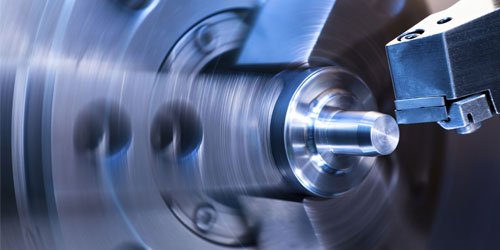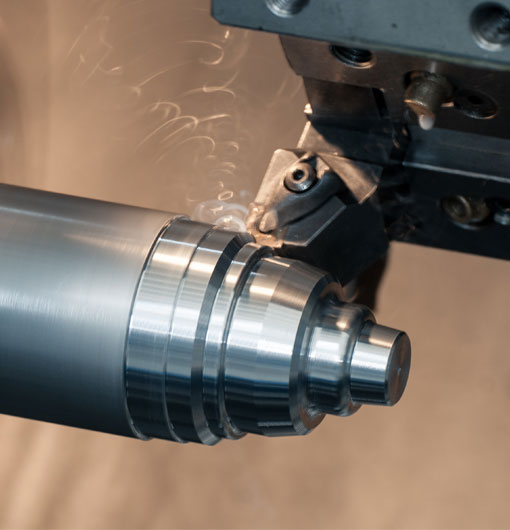Introduction
CNC turning is a versatile and precise machining process that relies on the use of G codes to create intricate designs and achieve the desired level of accuracy in the final product. In this comprehensive guide, we will explore the basics of CNC G codes for turning, their applications, and tips to help you get the most out of your CNC turning projects. Whether you are new to the world of CNC machining or a seasoned veteran, understanding G codes will take your turning skills to the next level.
Getting Started with CNC G Codes for Turning
G codes, or preparatory functions, are essential in CNC programming for providing specific commands to the machine. In the CNC turning process, these codes instruct the machine on how to move, at what speed, and in which direction. The use of G codes ensures consistent and repeatable results regardless of the machinist's skill level. Some commonly used turning G codes include:
G00: Rapid positioning
G01: Linear interpolation (straight line motion)
G02: Circular interpolation (clockwise)
G03: Circular interpolation (counterclockwise)
G70: Finishing cycle
G71: Rough turning cycle
G72: Rough facing cycle
G90: Absolute positioning
G91: Incremental positioning
Understanding G Code Parameters for Turning
To successfully execute a turning operation, G codes must be accompanied by parameters that provide specific information about the required action. Parameters often include coordinates (X, Y, and Z), feed rates (F), spindle speed (S), and tool selection (T), among others. By understanding the meaning and use of these parameters, operators can create highly tailored programs that deliver exceptional results.
Tips for Efficient and Accurate CNC Turning
Once you have a solid understanding of G codes and their accompanying parameters, honing your CNC turning skills will involve refining your approach and workflow. Here are some general tips to help improve efficiency, precision, and overall quality.
Plan your turning sequence:Before starting your CNC program, plan your turning operations in a logical order to prevent unnecessary machining steps and reduce idle time.
Use canned cycles:Canned cycles are pre-programmed G code sequences that can perform common machining tasks such as drilling, tapping, and more. Utilizing canned cycles can significantly reduce the amount of manual programming required.
Verify your program:Always simulate your CNC program using software before running the actual machining operation. This helps identify any discrepancies, potential collisions, and other problems that may lead to costly mistakes.
Prioritize tool rigidity:Always opt for the most rigid cutting tools and holders to limit deflection, improve surface finish, and achieve tighter tolerances.
Advanced G Code Techniques for Turning
As operators gain experience and confidence with basic G codes and parameters, they can begin to explore advanced programming techniques that enhance precision, versatility, and productivity. Some advanced turning G codes worth investigating include:
G40, G41, G42: Cutter radius compensation (used to automatically adjust the toolpath based on the tool's diameter)
G92: Spindle speed programming (allows the operator to control spindle speed throughout the turning process)
G76: Threading cycle (for programming complex thread profiles, including single-point and multi-start threads)
By incorporating advanced G codes and techniques, operators can tackle more complex turning projects while delivering consistently high-quality results.
Frequently Asked Questions
Below are some frequently asked questions related to CNC G codes for turning:
Q1: What is the difference between G90 and G91?
G90 is an absolute positioning command, meaning that the coordinates specified are in relation to the machine's origin (also called the machine home position). On the other hand, G91 is an incremental positioning command, where the coordinates specified are relative to the current position of the tool.
Q2: How can I improve surface finish in CNC turning?
Optimizing surface finish in CNC turning involves multiple factors, including the selection of suitable cutting tools, proper tool geometry, tool path programming, and adjusting cutting parameters such as spindle speed, feed rate, and depth of cut.
Q3: Can G codes be reused in a CNC program?
Yes, G codes can be reused in a CNC program by utilizing subroutines or loops. These programming techniques allow for the repetition of specific turning operations or entire sections of the program without manual duplication.
Delving Deeper into CNC G Codes for Turning
Gaining in-depth knowledge of CNC G codes and their applications represents an excellent investment for any machinist or programmer looking to maximize the versatility and precision of their turning projects. By understanding the fundamentals, advancing towards more complex techniques, and practicing good machining practices, the boundaries of what you can accomplish with CNC turning will expand exponentially.
May this comprehensive guide serve as a helpful starting point on your journey towards mastering CNC G codes for turning. Remember, practice, experimentation, and continuous learning are the keys to success in CNC machining. Happy turning!
cnc g codes turning













